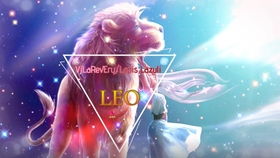
Leo Constellation History: A Journey Through Time
The Leo constellation, known for its majestic lion, has fascinated skywatchers for centuries. Its rich history is intertwined with mythology, astronomy, and cultural significance. Let’s embark on a detailed exploration of the Leo constellation’s history, uncovering its origins, mythology, and its impact on various cultures.
Origins and Constellation Formation

The Leo constellation is one of the 88 constellations recognized by the International Astronomical Union. It is located in the northern hemisphere and is visible from both hemispheres. The constellation is formed by a pattern of stars that resemble a lion, with its head, mane, and tail clearly defined.
The constellation’s name, Leo, comes from the Latin word “Leo,” which means lion. The ancient Greeks, Romans, and Egyptians all associated the constellation with the lion, a symbol of strength and courage.
Mythology and Legends

The Leo constellation is steeped in mythology and legends from various cultures. Here are some of the most notable stories:
Greek Mythology: In Greek mythology, Leo is associated with the story of the Nemean lion. According to the myth, the Nemean lion was a fearsome creature that terrorized the countryside. Hercules, the hero, was tasked with killing the lion as one of his twelve labors. After a fierce battle, Hercules managed to kill the lion and wore its skin as armor, making him invincible.
Roman Mythology: In Roman mythology, Leo is associated with the god of the sun, Sol Invictus. The lion was seen as a symbol of strength and power, representing the sun’s dominance over the other celestial bodies.
Egyptian Mythology: In Egyptian mythology, Leo is associated with the god Ra, the sun god. The lion was seen as a protector of the sun god and was often depicted as a lion-headed god.
Astronomical Significance

The Leo constellation is home to several notable celestial objects, including stars, nebulae, and galaxies. Here are some of the most prominent ones:
| Object | Description |
|---|---|
| Regulus | The brightest star in the constellation, known as the “Heart of the Lion.” It is a main-sequence star with a magnitude of 1.35. |
| Algieba | A binary star system that appears as a single star to the naked eye. It is composed of two giant stars with a combined magnitude of 2.1. |
| NGC 3303 | A globular cluster located in the constellation. It contains thousands of stars and is one of the brightest globular clusters in the sky. |
| Messier 95 | A spiral galaxy located in the constellation. It is one of the closest spiral galaxies to Earth and is visible with a telescope. |
Cultural Significance
The Leo constellation has held cultural significance in various societies throughout history. Here are some examples:
Chinese Astronomy: In Chinese astronomy, the Leo constellation is part of the 28 lunar mansions, known as the “Twelve States.” It is associated with the element of fire and is represented by a dragon.
Maya Astronomy: The Maya civilization also recognized the Leo constellation and incorporated it into their astronomical observations and rituals.
European Almanacs: During the Middle Ages, European almanacs often included the Leo constellation as part of their astronomical and astrological information.
Conclusion
The Leo constellation’s history is a testament to the enduring fascination humans have with the night sky. From its origins in mythology to its astronomical significance and cultural impact, Leo continues to captivate skywatchers and inspire wonder. As we gaze upon the stars, we are reminded of the vastness of the universe and the timeless stories that have shaped our understanding of the cosmos.





